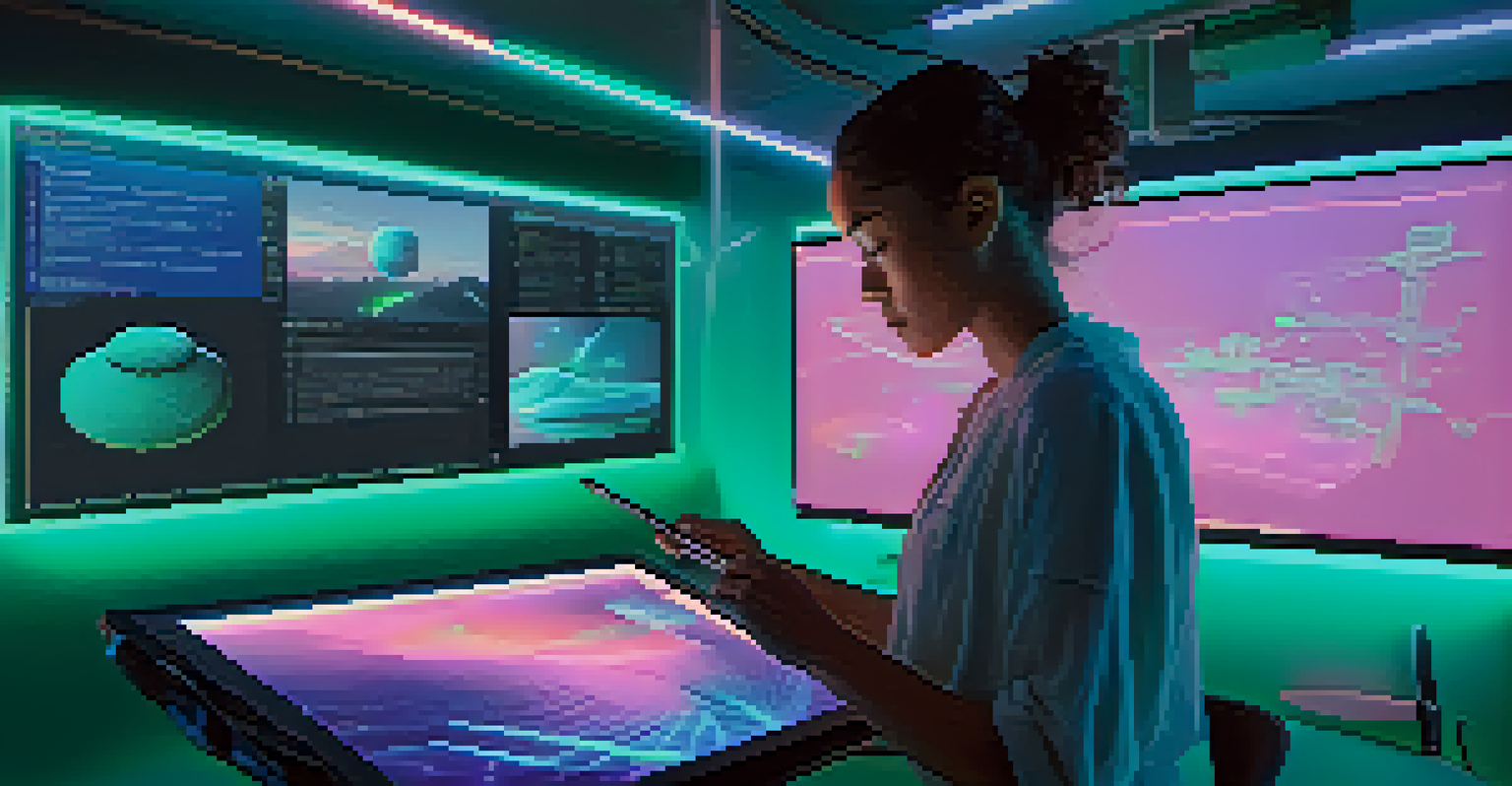The Role of Standards in NFT Interoperability Across Platforms

What Are NFTs and Why Do They Matter?
Non-fungible tokens, or NFTs, are unique digital assets verified using blockchain technology. Unlike cryptocurrencies such as Bitcoin, which are interchangeable, NFTs represent ownership of specific items, whether digital art, music, or virtual real estate. This uniqueness is what gives NFTs their value and appeal, making them a hot topic in the digital economy.
Interoperability is not a feature; it’s a requirement.
The rise of NFTs has created a vibrant marketplace where artists and creators can sell their work directly to consumers. This direct connection not only enriches the creator's experience but also allows for new revenue streams. As more individuals and businesses dive into the NFT space, understanding the significance of standards becomes crucial.
As NFT popularity grows, so does the complexity of managing these assets across various platforms. This complexity raises the question: how can we ensure that NFTs maintain their value and usability regardless of where they are traded? This is where interoperability and standards come into play.
The Concept of Interoperability in NFTs
Interoperability refers to the ability of different systems or platforms to work together seamlessly. In the context of NFTs, this means that a digital asset created on one platform should be usable and recognizable on another. For example, an NFT created on Ethereum should ideally be transferable and function on other blockchain platforms without any loss of value or functionality.

Without interoperability, NFT owners could find themselves trapped within a single platform, limiting their ability to trade or showcase their assets. This creates a fragmented ecosystem where value is restricted, and users may miss out on potential markets. Interoperability helps mitigate these issues, fostering a more inclusive digital economy.
NFTs: Unique Digital Assets
NFTs are distinct digital items verified by blockchain technology, offering ownership of various forms of content.
Think of interoperability as a universal language for NFTs. Just as speaking multiple languages can open doors to new cultures and communities, interoperability allows NFTs to thrive across diverse platforms, enhancing their appeal and usability.
Why Standards Matter for NFT Interoperability
Standards serve as guidelines that define how NFTs should be created, shared, and traded across different platforms. These standards ensure that all NFTs, regardless of their origin, can be easily recognized and utilized by various systems. When everyone follows the same rules, the entire ecosystem becomes more efficient and user-friendly.
Standards are the foundation of a thriving digital ecosystem.
For instance, the ERC-721 and ERC-1155 standards on the Ethereum blockchain have become the foundation for most NFTs. They outline how tokens are structured, making it easier for developers to create and manage NFTs. Without such standards, developers would face significant hurdles in ensuring compatibility, leading to a chaotic landscape where NFTs could lose their value.
In essence, standards act as the glue that holds the NFT ecosystem together. They facilitate communication between platforms, making the buying, selling, and trading of NFTs a smoother experience for everyone involved.
Current Standards Shaping NFT Interoperability
Several key standards are currently shaping the landscape of NFT interoperability. As mentioned earlier, ERC-721 and ERC-1155 are the most widely recognized standards. They not only define how NFTs are structured but also dictate how they can be transferred between users and platforms, ensuring a consistent experience.
Additionally, standards like the OpenSea API allow different platforms to connect and share NFT listings. This means that an NFT listed on one marketplace can also be viewed and purchased on another platform. Such interoperability promotes competition, innovation, and ultimately better experiences for consumers.
Interoperability is Essential
Interoperability allows NFTs to function across different platforms, preventing fragmentation in the digital asset ecosystem.
These standards are essential for creating a cohesive ecosystem where NFTs can thrive. By adhering to these guidelines, developers can ensure that their creations are not only functional but also compatible with a wide range of platforms.
Challenges to Achieving Full Interoperability
While the concept of NFT interoperability is promising, several challenges remain. One major hurdle is the lack of universal standards; different blockchains may adopt varying protocols, leading to incompatibility issues. This is akin to trying to fit square pegs into round holes—if the standards don’t align, the process becomes cumbersome.
Moreover, as new platforms emerge, they may implement their own unique standards, further complicating the landscape. This fragmentation can confuse users and deter them from fully engaging with NFTs. Like trying to navigate a maze without a map, it can be challenging to understand where and how to trade assets.
Addressing these challenges requires collaboration among developers, platforms, and users to establish and adopt common standards. Only by working together can we overcome these obstacles and create a truly interoperable NFT ecosystem.
The Future of NFT Interoperability and Standards
Looking ahead, the future of NFT interoperability hinges on the establishment of more robust and universally accepted standards. As the NFT market continues to mature, the need for seamless integration across platforms will only grow. This evolution is crucial for enhancing user experience and ensuring the longevity of NFTs in the digital marketplace.
Emerging technologies, such as cross-chain solutions, are also poised to play a significant role in facilitating interoperability. By enabling transactions and interactions between different blockchain networks, these technologies can help bridge the gaps that currently exist. Picture this as building bridges between islands; once connected, trade and interaction become much easier.
Standards Facilitate NFT Trading
Adopting common standards ensures NFTs can be easily created, shared, and traded, enhancing user experiences in the marketplace.
As the industry navigates these changes, the focus will be on creating an environment where NFTs are not only diverse but also easily accessible. This will empower users to explore, trade, and enjoy their digital assets without barriers.
Conclusion: Embracing Standards for a Thriving NFT Ecosystem
In conclusion, the role of standards in NFT interoperability cannot be overstated. They are essential for ensuring that NFTs can move freely between platforms while maintaining their value and functionality. As we’ve explored, a strong foundation of standards leads to a more vibrant and interconnected digital economy.
By embracing and developing these standards, we can unlock the full potential of NFTs, allowing creators and collectors to engage in a rich and diverse marketplace. This collaborative effort among stakeholders is vital for cultivating an environment where everyone can thrive.

Ultimately, the future of NFTs depends on our ability to work together, set common standards, and create an interoperable ecosystem that benefits all participants. As we step into this exciting future, let’s prioritize building connections that enhance the NFT experience for everyone.